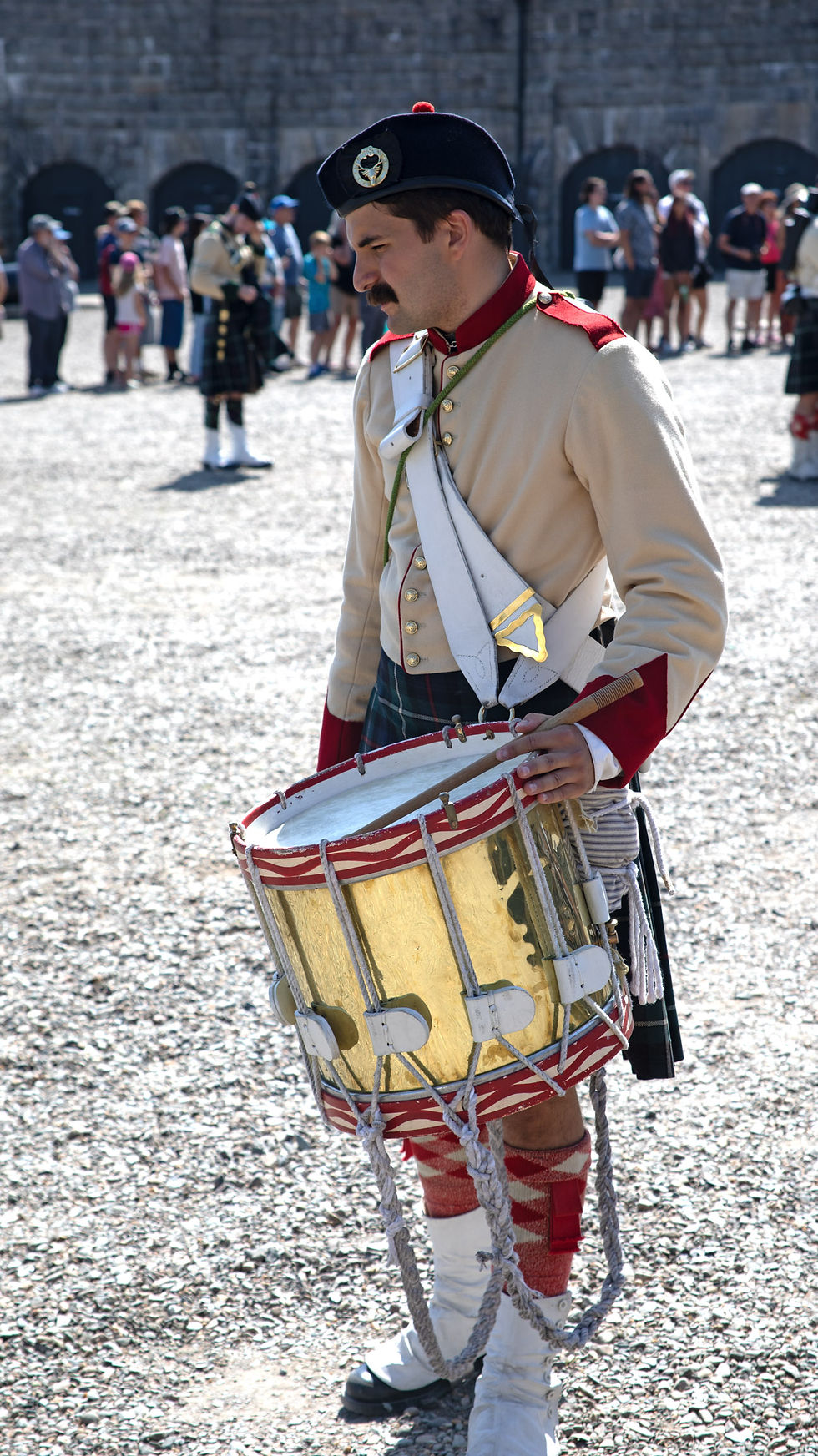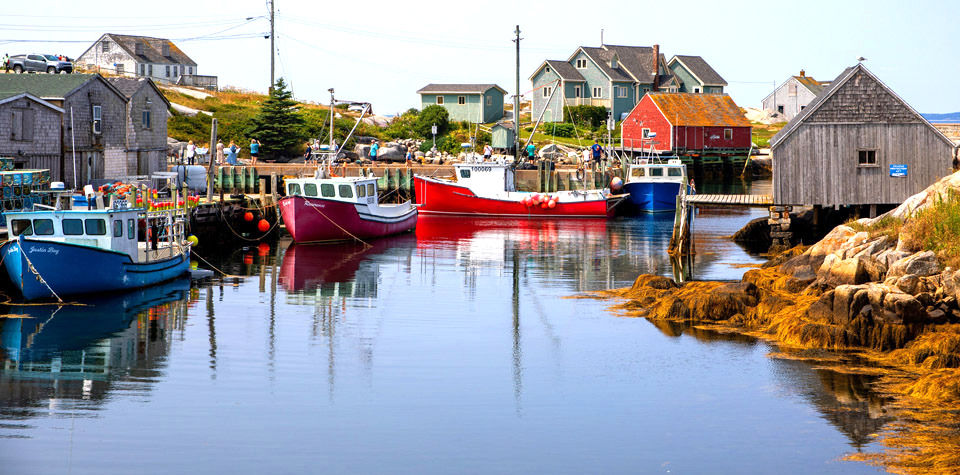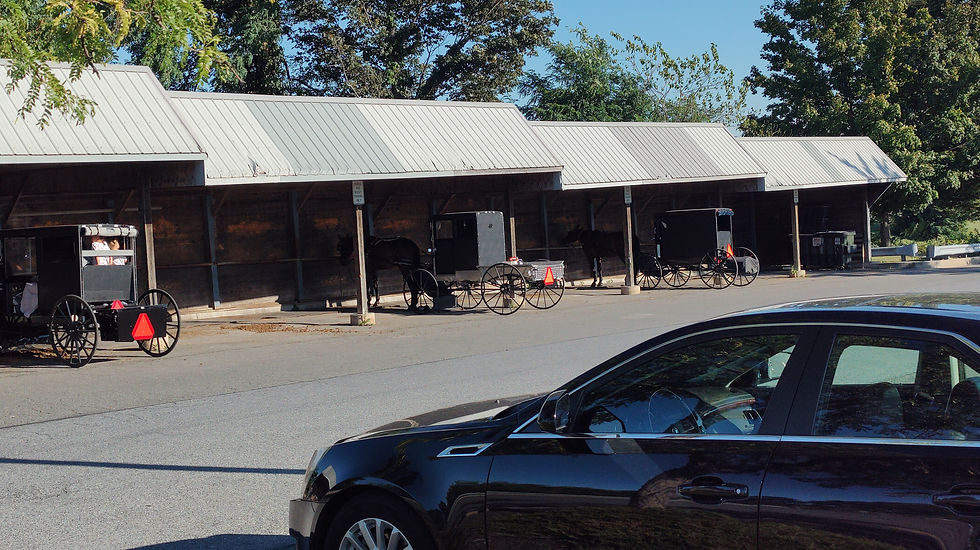Halifax, NS
- jsbergauer1
- Aug 16
- 6 min read
After a five hour drive, we arrived at our campground in the Halifax area. Nova Scotia has been in a drought situation and as you would suspect some wildfires have started. We have noticed as we drive through the countryside that the rivers are more like creeks. There is more smoke in the air and it gets hazy depending on how the wind blows but it has not impeded our travels so far and as far as I know, no structures have been lost due to the fires.
The day after our arrival, we boarded a bus for our tour of the Halifax area. The first stop was the cemetery where the few Titanic victims, whose bodies were recovered and not buried at sea, are buried. The White Star Line hired a cable ship the MacKay-Bennent to go out to the disaster area and collect bodies that were still in the area. Due to the sheer number of bodies or If the body was not identifiable, they were buried at sea. Bodies that could be indetified by their personal belongings on them were brought back to Halifax for burial. The company paid for small simple headstones, if fancier ones were wanted, the family of the victim would pay for it. One 24 year old mechanic on the cable ship, Clifford Crease, kept a diary of the work. Only one other diary that remains today was kept by Fredrick Hamilton. Crease's diary details the gruesome task of retrieving and burying victims at sea, offering a stark account of the aftermath of the disaster.

The smaller headstones are of the ones belonging to the victims of the Titanic. As a matter of coincidence, the layout of the graves looks like the bow of a ship and is pointing northeast. The remains of the Titanic, when found, is also pointing northeast. The architect of this section of the cemetery said it is was that way due to the lay of the land. You can see some of the taller headstones paid for by the victims families. Many of the wealthy victims remains were taken back to their home and buried there.

Once the body was brought aboard the cable ship, it was assigned a number and personal effects were detailed so that the identification process could begin. When the body was buried, if they were positively identified, their name, assigned number and the date of the disaster were put on the headstone. In this photo, J.W. Marriott was the second body recovered, he was a steward aboard the Titanic. It is not known if he is related to the Marriott Hotel chain family.

The body recovery that most impacted Clifford Crease was a small infant that he pulled into the boat after grabbing what he thought was some garments floating in the water. Clifford Crease went on to serve in World War !, survived the war and went on to live his life retiring from a brewery. He never told his family what he had been part of until 1955 while watching a television program about Walter Lord’s book “A Night to Remember” and that prompted him to open up about his connection to the Titanic. Clifford Crease said that he thought about the unknown child he pulled from the frigid waters without a life jacket, "everyday until he died." Crease died in 1961, and he would bring small bouquets of flowers and toys to leave at the unknown child's grave and would do so with out ever telling anyone. The child was finally identified in 2008 using mitochondrial DNA testing by bio-anthropologist Ryan Parr and the American Armed Forces DNA Identification Laboratory to reveal his identity. Today, visitors still bring small toys, flowers and other gifts to leave at his grave. Clifford Crease is buried nearby.
A little further up the hill and a 100 or so yards away is a memorial to the Halifax explosion. The explosion was the result of a low speed collision in what is called "the narrows" of Halifax harbor. The collision caused barrels of benzene to leak and the vapors found their way into the hold of the S.S Mont-Blanc that was packed with high explosives. The resulting explosion instantly obliterated every thing within a one half mile radius, including the community of Richmond. It is estimated that at least 1,782 people were killed by the blast, debris, fires or collapsing buildings. As estimated 9,000 were injured. It was the largest man made blast ever at that time. It was estimated to have been equal to 2.9 kilotons of TNT.

The monument placed at the cemetery for the Halifax explosion. The guitar player who played for us at the Braddock Kitchen Party wrote the song that was played at the dedication.
. After paying our respects, we boarded the bus and headed for the Citadel. Unlike Fort Louisbourg, the Citadel was built to protect Halifax and housed only military. Now I am not a big fan of bus tours, you don't get to really see much as you fly by whatever the guide is talking about but we were able to get out and wander for a little.

A Canada Parks employee dressed in the period uniform of a member of the 78th Highlanders who were stationed at the Citadel during its use as a fortress. The Citadel is the fourth fort to be constructed on the hill overlooking Halifax and shows what military life was like in 1868 at the fort.

The fourth fort is a six sided star design surrounded by a 50 foot ditch and high ramparts. The British were very proud of it and showed all who wanted to see it how protected and armed it was and how they only had the best troops stationed here. It was meant as much to impress and it was to defend. It must have worked, the fourth fort was never attacked.

Today, park employees dress the part and drill just like any military unit. You could constantly hear the fife and drums along with bagpipes playing and they practiced.

A member of the fife and drum corp taking a break while being drilled in the proper step for parade maneuvers Our guide must have been hot because he took us to three rooms and talked all the time the drills were happening, the bagpipes played and display of musket firings were taking place. By the time he finished we had precious little time to run around for a few pictures. It didn't help that the gate was going to be closed at 11:30 to prepare for a cannon firing demonstration and if you were on the inside you were their until the cannon firing, our bus was leaving at 11:45. This was the last guided tour I took, from now on I excused myself and wandered around taking photos rather than sitting in a room being recited dates that I will never remember.

Uniform detail of the dress uniform of a 78th Highlander soldier. It is interesting to note that the uniform has 26 buttons on it but only 6 are actually functional. It was meant to impress who ever they were facing off with in battle.
Having made it back to the bus in time, we headed for the wharf area for a bite of lunch and then a visit to the Canadian Maritime Museum. Like all the Maritime Provinces, Nova Scotia is tied to the sea and this Maritime Museum celebrates that tie.

The CSS Acadia dressed up and welcoming visitors to the Maritime Museum. The ship was launched in 1913 and is known for mapping the coast of Newfoundland when it became a province, updating maps that were, in some cases, a century old. It has taken part in oceanographic studies of Canada from the frozen north of Hudson's bay to the coast of Nova Scotia. It is the only surviving ship of the Halifax explosion and the only remaining ship that served Canada in both world wars.
The final day in the Halifax area was a free day and we opted for a trip to Peggy's Cove, a once quiet fishing village that has been "discovered" if you will.

As you walk into Peggy's Cove, you are greeted by this mural carved into some protruding granite that sits next to the artists house. It pays homage to the fisherman in Peggy's Cove.

A view of the cove. I talked with a man who's friend has built most of the fishing boats here. It was and interesting talk for me, a frustrated wooden boat builder. They are rugged working craft that can handle some of the rough conditions found in the North Atlantic area.

Low tide at Peggy's Cove.

A look down the cove at the colorful boats.

This is a first for me. I have seen fiddlers, guitarists, saxophonists, and harpists but never a bagpipe busker. He was fun to listen to. I also understand that earlier in the day, a person with an alpenhorn was busking here.
It is time to leave the Halifax area and head for the coastal town of Lunenburg. Hope you can join us.



Comments